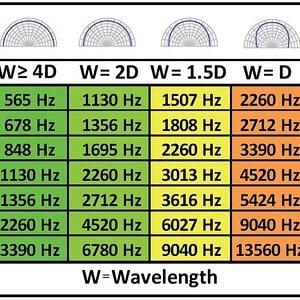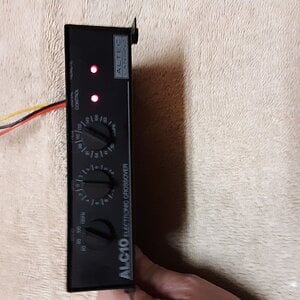Arythael 10+ year member
Junior Member
Edit: All I'm trying to get from this thread is an explanation as to why my max volume dropped from 28 (with a test tone) to 23 (with music) like it did. I'd like to know how to set my gain and HPF so that my max volume is 28 on music before my speakers start bottoming out, and hopefully they would be able to reach higher volume levels than they can now. My apologies in advance for the long post, but I'd prefer to give too much information rather than too little... so here goes:
So I'm doing my first install: CDT CL-61 6.5" components for my front stage powered by an MB Quart ONX4.80 amp, with a Kenwood KDC-HD548U head unit. The speakers are rated at 160W rms (@ 120 Hz high-pass filter), so I'm using the bridged outputs on the amp (which can push 320W x 2 @ 4 Ohm, rated). I followed jmac's amplifier setting tutorial, which went something like this:
1. Speaker RMS power = 160 watts; speaker resistance = 3.9 ohms (tested with DMM)
2. Calculated from V = sqrt(P*R), my amp output voltage should be sqrt(160*3.9) = 24.98 volts
3. Disconnected speakers from output of amp, stuck multimeter leads in each of 2 channels (one channel at a time).
4. With DMM set to AC voltage, I played a 1000 Hz (0 dB, I believe) test tune with head unit volume knob at 28 (real max volume is 35, starts to audibly distort around 29 so I used 28 as my max volume).
5. Turned up gain on each channel to a DMM-measured 24.7 volts (as close as I could get to 24.98v without going over).
6. Reconnected speakers to output terminals on amp, switched amp from full range to HPF mode, turned HPF knob to its highest frequency.
7. While playing a 125 Hz test tone (still 0 dB as far as I know) with volume still set to 28, turned down HPF until I noticed audible distortion, then turned it back up a little bit more for safety.
For the most part, this seems to have worked out great. Considering the huge improvements in sound quality and volume over the stock speakers, I'm mostly pleased with the products (for a low-budget system, that is). My main concern is that they don't get loud enough: they get decently loud, but once I buy and install my substage (planning on 2 12s, 1000-1500W amp, ported), there's no way these speakers will be able to keep up, so I want to make sure I can get them as loud as possible.
Anyway, I'm experiencing two major problems:
First off, my speakers bottom out -- at least I think that's what's happening, the speakers make a very loud tapping/knocking noise -- at medium-high volumes, usually around 23-24 on my head unit. From my understanding, music does not often play at 0 dB and thus should not even begin to bottom out until a minimum volume of 28 on my head unit.
Secondly, and more strangely, I have noticed that bass still plays through the speakers even with the HPF on... songs that play certain low frequencies sound altogether horribly distorted (so much that vocals can barely be heard/understood). I noticed this most prominently while playing A Milli.
More miscellaneous info: the speakers did not bottom out during 125 Hz tone @ 28 volume, even in full range mode; I used the same source (my iPhone) for the test tones and the music; iPhone volume all the way up in either case; iPhone and head unit equalizer both flat/off; Bass boost on head unit and amplifier both off/0dB.
So, did I do something wrong? Am I missing something, or are my speakers just having trouble doing rated? Is my amplifier's high-pass filter not working properly, or did I set it wrong? Please help!
So I'm doing my first install: CDT CL-61 6.5" components for my front stage powered by an MB Quart ONX4.80 amp, with a Kenwood KDC-HD548U head unit. The speakers are rated at 160W rms (@ 120 Hz high-pass filter), so I'm using the bridged outputs on the amp (which can push 320W x 2 @ 4 Ohm, rated). I followed jmac's amplifier setting tutorial, which went something like this:
1. Speaker RMS power = 160 watts; speaker resistance = 3.9 ohms (tested with DMM)
2. Calculated from V = sqrt(P*R), my amp output voltage should be sqrt(160*3.9) = 24.98 volts
3. Disconnected speakers from output of amp, stuck multimeter leads in each of 2 channels (one channel at a time).
4. With DMM set to AC voltage, I played a 1000 Hz (0 dB, I believe) test tune with head unit volume knob at 28 (real max volume is 35, starts to audibly distort around 29 so I used 28 as my max volume).
5. Turned up gain on each channel to a DMM-measured 24.7 volts (as close as I could get to 24.98v without going over).
6. Reconnected speakers to output terminals on amp, switched amp from full range to HPF mode, turned HPF knob to its highest frequency.
7. While playing a 125 Hz test tone (still 0 dB as far as I know) with volume still set to 28, turned down HPF until I noticed audible distortion, then turned it back up a little bit more for safety.
For the most part, this seems to have worked out great. Considering the huge improvements in sound quality and volume over the stock speakers, I'm mostly pleased with the products (for a low-budget system, that is). My main concern is that they don't get loud enough: they get decently loud, but once I buy and install my substage (planning on 2 12s, 1000-1500W amp, ported), there's no way these speakers will be able to keep up, so I want to make sure I can get them as loud as possible.
Anyway, I'm experiencing two major problems:
First off, my speakers bottom out -- at least I think that's what's happening, the speakers make a very loud tapping/knocking noise -- at medium-high volumes, usually around 23-24 on my head unit. From my understanding, music does not often play at 0 dB and thus should not even begin to bottom out until a minimum volume of 28 on my head unit.
Secondly, and more strangely, I have noticed that bass still plays through the speakers even with the HPF on... songs that play certain low frequencies sound altogether horribly distorted (so much that vocals can barely be heard/understood). I noticed this most prominently while playing A Milli.
More miscellaneous info: the speakers did not bottom out during 125 Hz tone @ 28 volume, even in full range mode; I used the same source (my iPhone) for the test tones and the music; iPhone volume all the way up in either case; iPhone and head unit equalizer both flat/off; Bass boost on head unit and amplifier both off/0dB.
So, did I do something wrong? Am I missing something, or are my speakers just having trouble doing rated? Is my amplifier's high-pass filter not working properly, or did I set it wrong? Please help!
Last edited by a moderator:


